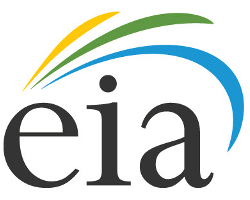
 






.gif)



|
Signature Sponsor


By Katie Fletcher
May 11, 2016 - The U.S. Energy Information Agency released its International Energy Outlook 2016, showing rising levels of demand over the next three decades. Total world energy consumption rises from 549 quadrillion Btu in 2012 to 815 quadrillion Btu in 2040, an increase of 48 percent.
Most of this growth will occur in countries outside of the Organization for Economic Cooperation and Development, particularly in Asia, including China and India, which account for more than half of the world’s total increase in energy consumption over the 2012 to 2040 projection period. Renewables are the fastest-growing energy source over the projection period, according to EIA’s IEO2016, increasing by an average of 2.6 percent per year. Electricity is the world’s fastest-growing form of end-use energy consumption and has been for decades. Renewables are the most rapidly increasing source for electricity generation, with average increases of 2.9 percent per year during the projection period. Nonhydropower renewable resources are the fastest-growing sources for new generation capacity and account for 5 percent of the total world generation in 2012, increasing their share in 2040 to 14 percent in the IEO2016 reference case, with most of the growth coming from wind.
Wind and hydropower each account for one-third of the increase in renewable electricity generation. Of the 5.9 trillion kWh of new renewable generation added over the projection period, other renewables (mostly biomass and waste) account for 856 billion kWh (14 percent).
The IEO2016 reference case projections do not include the potential effects of the recently finalized Clean Power Plan regulations in the U.S. The EIA’s preliminary analysis of the proposed CPP showed potential reduction of 21 percent (about 4 quadrillion Btu) in U.S. coal consumption in 2020 and 24 percent (almost 5 quadrillion Btu) in 2040 relative to the IEO 2016 reference case projection. Including the CPP would reduce world coal consumption to 165 quadrillion Btu in 2020 and to 176 quadrillion Btu in 2040, based on EIA’s analysis of the proposed rule. According to the EIA, with the CPP, U.S. renewable energy use in 2020 would be 7 percent (about 1 quadrillion Btu) higher than the IEO2016 reference case.
In the electricity chapter of IEO2016, a section was included on the world markets for wood pellets. Global production of wood pellets has increased significantly over the past five years. In 2013, the EU accounted for 85 percent of the world’s total consumption of wood pellets for energy production. Approximately 45 percent of Europe’s demand for wood pellets is met by trade within the EU and the remainder is imports primarily from the U.S., Canada and Russia. The U.S. is currently the world’s largest exporter of pellets, increasing by nearly 40 percent from 3.2 million short tons in 2013 to 4.4 million short tons in 2014.
Data from the U.K. Department of Energy and Climate Change indicated that electricity generation from plant-based biomass (which includes wood pellets) increased by 47 percent, from 8,933 gigawatt hours (GWh) in 2013 to 13,138 GWh in 2014, led by the conversion of the Drax power plant. In 2014, wood pellets supplied to Drax alone accounted for more than 80 percent of the wood pellets exported to the U.K. from the U.S. and 90 percent of the wood pellets sent from Canada. Almost 60 percent of all U.S. wood pellet exports and approximately 54 percent of all Canadian wood pellet exports in 2014 went to the Drax plant. The U.S. and Canada are the largest suppliers of pellets to the U.K., providing 61 percent and 19 percent of its total supply, respectively, followed by the Baltic countries and Portugal.
Demand for wood pellets also is increasing in South Korea and Japan, primarily for cofiring with coal. After the earthquake and tsunami in Japan in 2011 and the resulting closures of several nuclear plants, Japan has tried to close the gap in energy supply by increasing renewable energy generation. In South Korea, the introduction of a renewable portfolio standard in 2012 increased interest in the use of biomass and wood pellets for energy generation. Imports to the two countries come predominantly from Canada, Southeast Asia and the U.S. According to Bloomberg New Energy Finance, South Korea's demand for wood pellets in 2014 was estimated at 2.2 million short tons, equal to approximately 40 percent of the U.K.’s total.
The full IEO2016 can be accessed here. |
 











|